As the 2021 harvest is brewing out in the vineyards, in the winery the 2020 blend was completed in May. Thousands of litres of base wine have found their specific places in the symphony of our different cuvées. Soon this still wine will begin its metamorphosis into a sparkling wine and be laid to rest for several years in our cellars. The journey from vineyard to bottle is a transformative one, from berry to juice to wine through both alcoholic and malolactic fermentation and finally secondary fermentation with the subsequent influence of autolysis. During the long journey from grapes to a finished Méthode Traditionnelle sparkling wine, the assemblages is perhaps the most defining moment.
The assemblage, or blend in the English vernacular, is of particular importance in non-vintage winemaking. Our Classic and Première Cuvées - as indeed most iconic Champagnes - are made to offer both excellence and reliability, year in and year out, and we achieve this by finding the right mix of our many different components that embodies our style. This is, as you can imagine, quite a challenge. Every year we have well over a hundred different ferments - comprised of the classic champagne trio of grapes, Chardonnay, Pinot Noir and Meunier - clearly marked by the particularities of the vintage in question. It’s not just that Chardonnay, from (for example) our Home Vineyard, will taste differently from one year to another, two neighbouring tanks filled with the juice of the same grapes of the same vintage (same day of harvest even) will never taste the same. The result is a plethora of variability that we need to make sense of. Adding on to the complexities is the fact that what we are blending is nowhere near the final product, it’s only a base wine that will go through another fermentation and anything from two to six years of ageing in bottle. The assemblage is in a way us trying to predict the future. Predicting the future is sadly not something that you learn in school, but in the case of winemaking it’s something you can get close to mastering with experience – a lot of experience. This is where Hervé Jestin comes into the picture, our consultant Winemaker, our secret weapon. Because if there is something Hervé has in abundance, it’s experience in the field of Méthode Traditionnelle winemaking. Since the 1980’s Hervé has overseen the production of tens – if not hundreds - of millions of bottles of Fizz giving him a savoir faire that we are lucky to be able to channel at Hambledon.
Every year - normally after Easter when the slow élévage our base wines go through has reached the desired stage - Hervé, Ian, Felix and I meet up for a week of serious tasting sessions. From around half past eight in the morning to at least seven in the evening we are categorising qualities and trying out blends, often down to0.1% accuracy. Needless to say, our thirst for wine is diminished after this week. Needless to say, it recovers quickly.
The only thing left to do when we have found our cuvées is to build them in reality. That’s the reason for the big tanker that you might have noticed if you have visited us over the past month. After many long days of moving wine with a watchful eye on the flow meter, the 2020 harvest with the help of our reserve wine-soleras has taken its final form as a still wine. Soon it will be bottled for its next transformation into a sparkling wine - then we start all over again with the 2021 vintage.
Hervé already has a pretty good idea of how these new blends will end up, the rest of us have to wait a few years.





